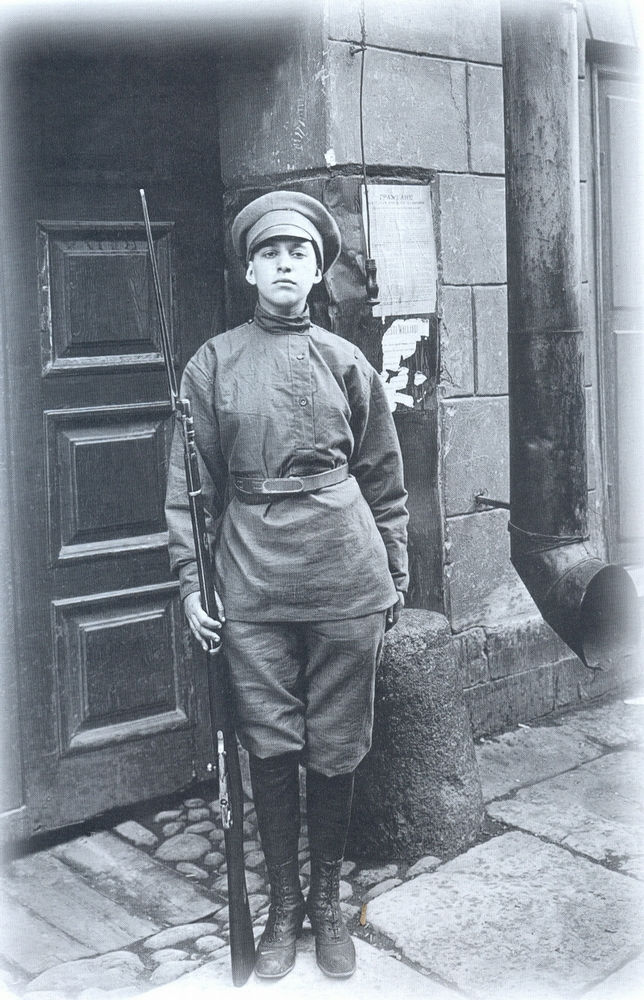Unknown Soldiers Episode 4- Battalions of Death: Commentary & Sources
- James Houser
- Aug 23, 2021
- 3 min read
Women in the armed forces is an issue I am extremely passionate about. If you listen to this episode and you still don't get my views on it, I'll come right out with it: I am PRO women in the military, and I'm very adamant about their rights and their place in the service. I have worked with too many capable, outstanding women during my time in the Army to have any other opinion on the matter.

Which is why the story of the Women's Battalion of Death is so important to me, and why I feel it deserves to be known about by a much wider audience. It's a complex, thorny tale, one that defies both long-held notions about women's place in society and the surface-level feminism of "rah rah girl power." If you're looking for an edifying story one way or another...this might not be the story for you. It's downright tragic. You want edifying, why are you listening to military history? It's dark and bloody, as I repeatedly remind people.

I talk in this episode about how the unique circumstances of Russia's previous history of women in combat, the strains of World War I, and the crazy times of the Russian Revolution allowed for the creation of a women's military unit designed to fight on the frontlines - though still within a gendered context, as a way of shaming men into fighting. I'm pretty convinced that this was the poison pill that helped destroy the notion of Women's Battalions in the short run, even if the Bolshevik Revolution killed them in the long run.

One of the big questions from this episode is, why did this happen in Russia and nowhere else? And well...not 100% sure I'm able to provide an answer. Yes, Russia was in a weird place in 1917, but so was every country involved in World War I. It was a crazy time. If you get the chance, check out Mary Segal's 1995 article “Women’s Military Roles Cross-Nationally: Past, Present, and Future,” also cited below. This article attempts to untangle the pattern of women's participation in combat by laying out all the factors that have an impact. Below I have a chart from her article, which shows all the factors she discusses.

Besides the Revolution, one factor I am interested in is how so many women managed to participate in combat BEFORE the February Revolution of 1917. This is especially remarkable considering that Russia was one of the most repressive, patriarchal societies in the world at the time. This was still during the "normal" period of the war, before really crazy social change (i.e. Revolution) had broken out, so there's not really a straight answer as to why individual/small groups of women fought in Russia but nowhere else. I expect more research needs to be done.
Below are various images of today's protagonist, Maria Bochkareva, the Russian woman soldier par excellence and the commander of the Women's Battalion of Death. On the left she is pictured with famous British suffragette Emmeline Pankhurst.
Anyway, I hope you enjoyed today's episode. I look forward to your thoughts on it! Below are my sources, and I will see you on Monday!
SOURCES
Bochkareva, Maria. Yashka: My Life as a Peasant, Exile and Soldier. London: Constable Publication, 1919.
Engel, Barbara Alpern. Review of They Fought for the Motherland: Russia’s Women Soldiers in World War I and the Revolution, by Laurie Stoff. Slavic Review 66, no. 4 (Winter 2007): 761-762.
Figes, Orlando. A People's Tragedy: The Russian Revolution, 1891-1924. London: Jonathan Cape, 1996.
Segal, Mary Wechsler. “Women’s Military Roles Cross-Nationally: Past, Present, and Future.” Gender and Society 9, no. 6 (Dec. 1995): 757-775.
Stockdale, Melissa K. “My Death for the Motherland is Happiness: Women, Patriotism, and Soldiering in Russia’s Great War: 1914-1917.” The American Historical Review 109 (2004): 78-116.
Stoff, Laurie. They Fought for the Motherland: Russia's Women Soldiers in World War I and the Revolution. Lawrence: University Press of Kansas, 2006.
Stone, Norman. The Eastern Front, 1914-1917. London: Penguin, 1975.












Comments